Abstract
A new variant of erythrocyte acid phosphatase, designated ACP1TIC-1, is characterized by a more cathodal electrophoretic mobility than any of the common polymorphic phenotypes, both in the presence and absence of tricarboxylic acids. Individuals of the ACP1TIC-1 phenotype have a level of enzyme activity (4.8 +/- 0.1 mumol/g hemoglobin per min) similar to individuals of the ACP1A phenotype, although no differences in Km values were observed or is the extent of phosphate inhibition different between the ACP1TIC-1 and the ACP1B variants. The thermostability of the enzyme is less than that observed for any of the common variants. The TIC-1 variant is activated by adenine and inhibited by folic acid to the same extent as the type-A enzyme, while the stimulation of the activity of the TIC-1 enzyme by hypoxanthine and the inhibition of it by uric acid is similar to that for the B enzyme. Thus, the TIC-1 variant has a unique combination of kinetic properties, seeming to be a hybrid of A-type and B-type characteristics.
Full text
PDF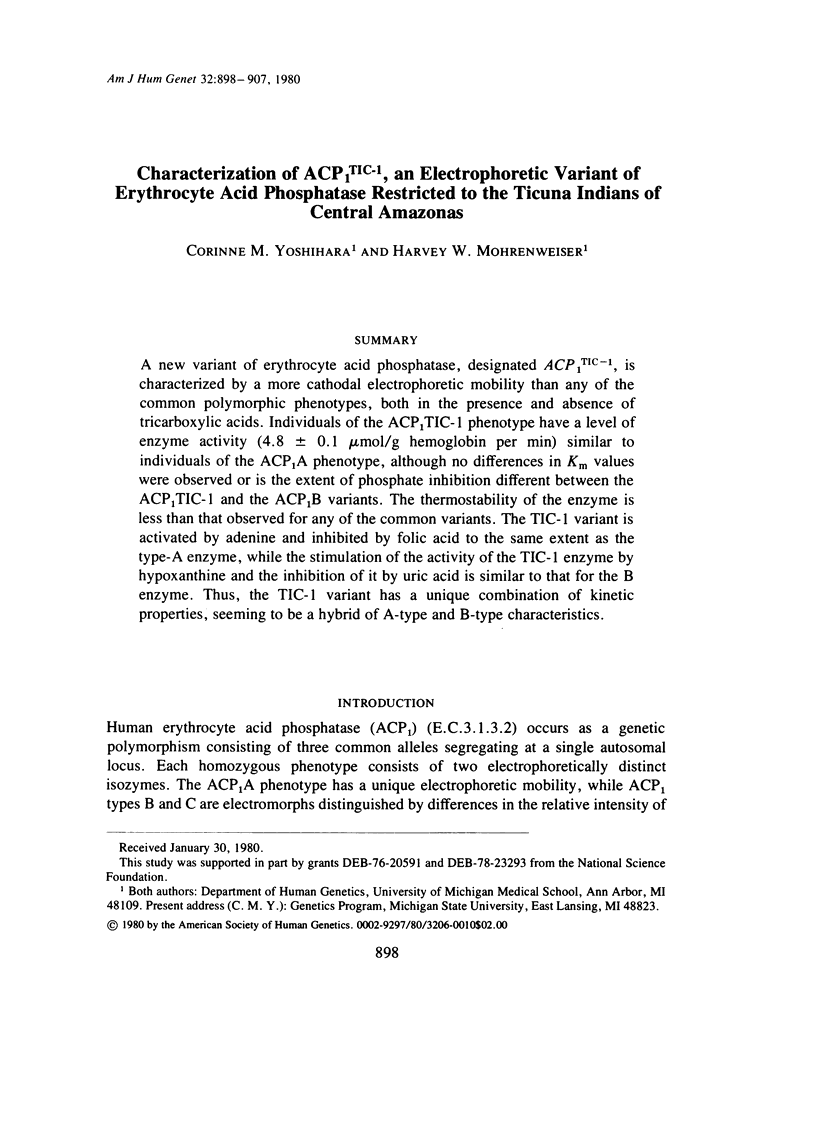
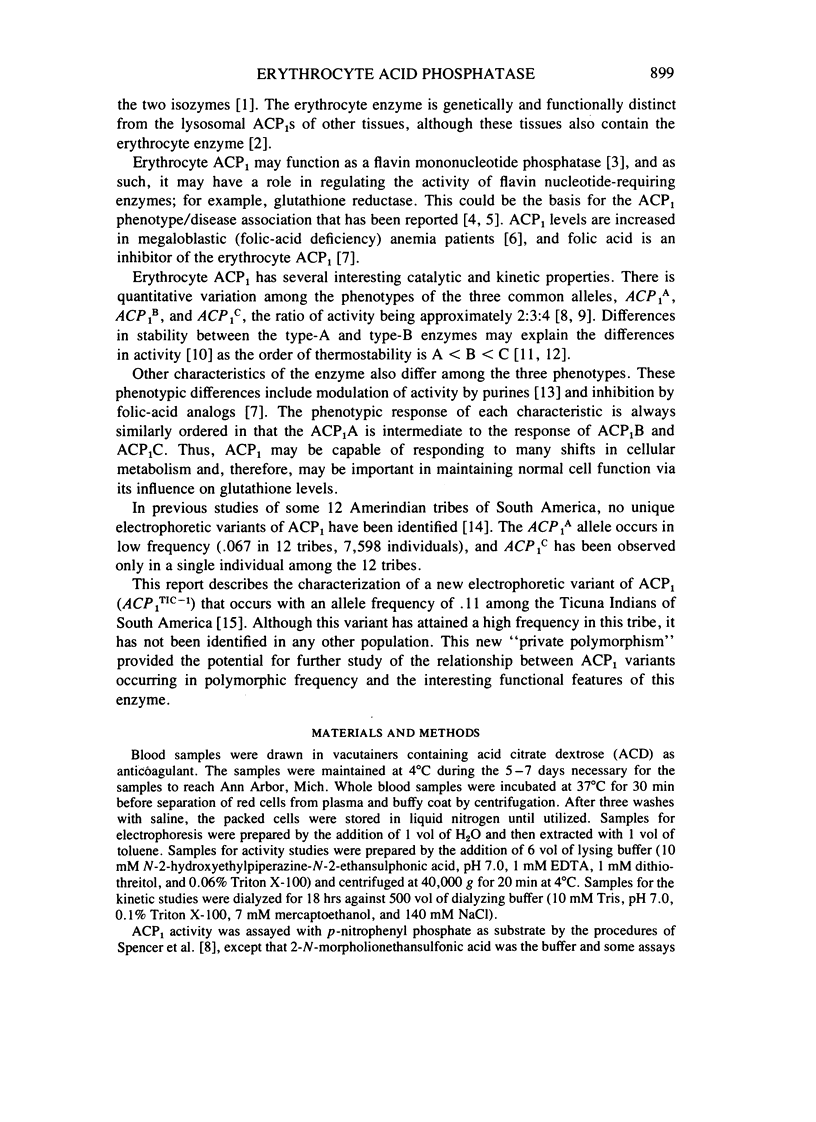
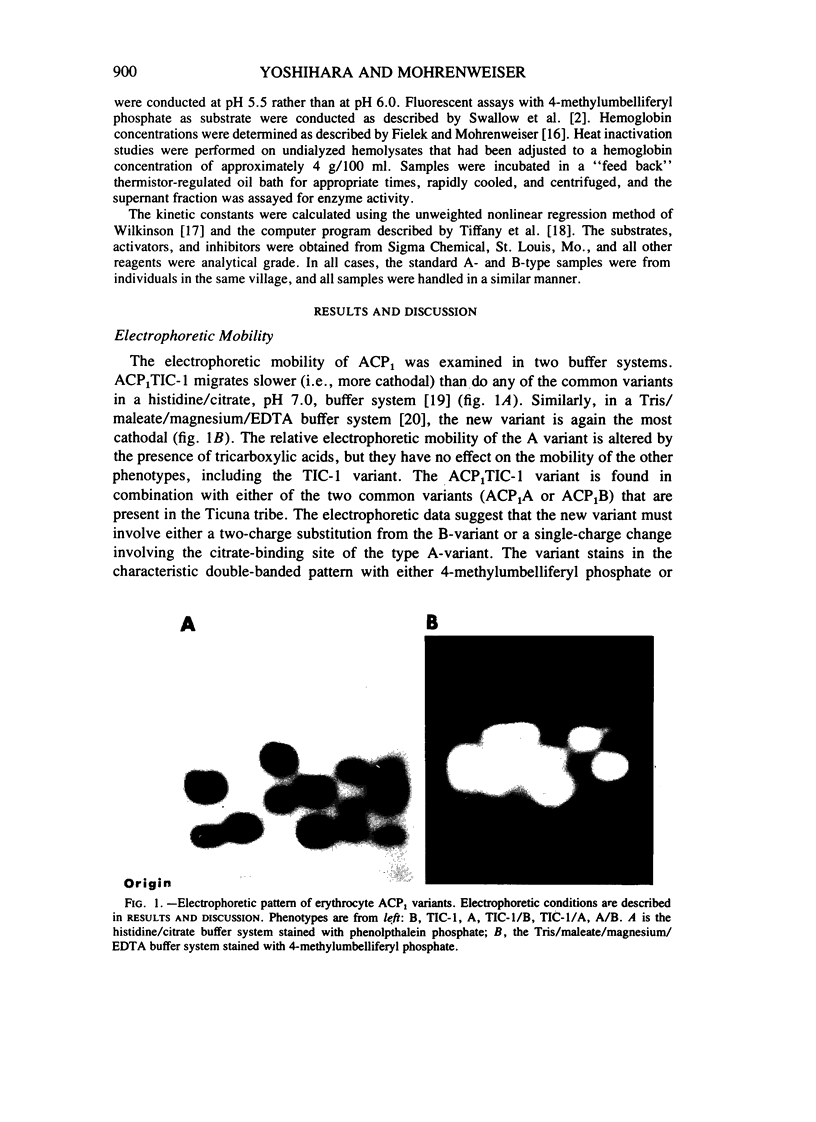
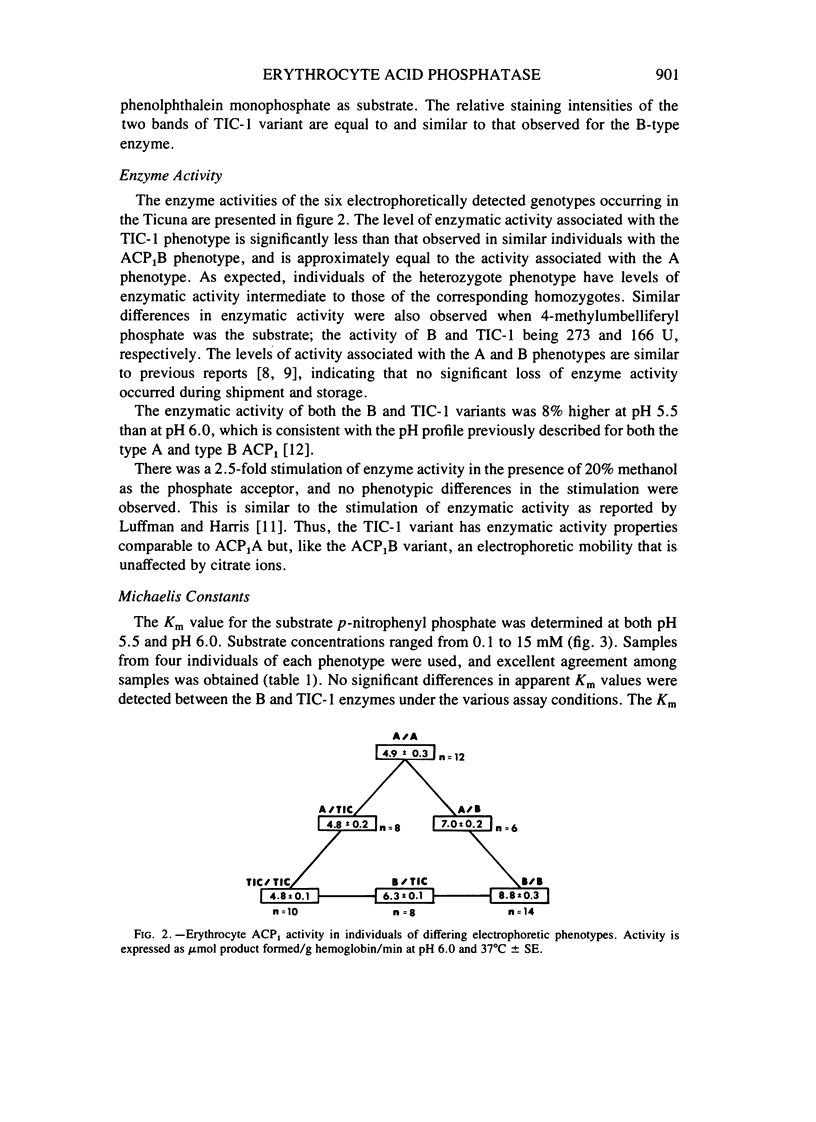
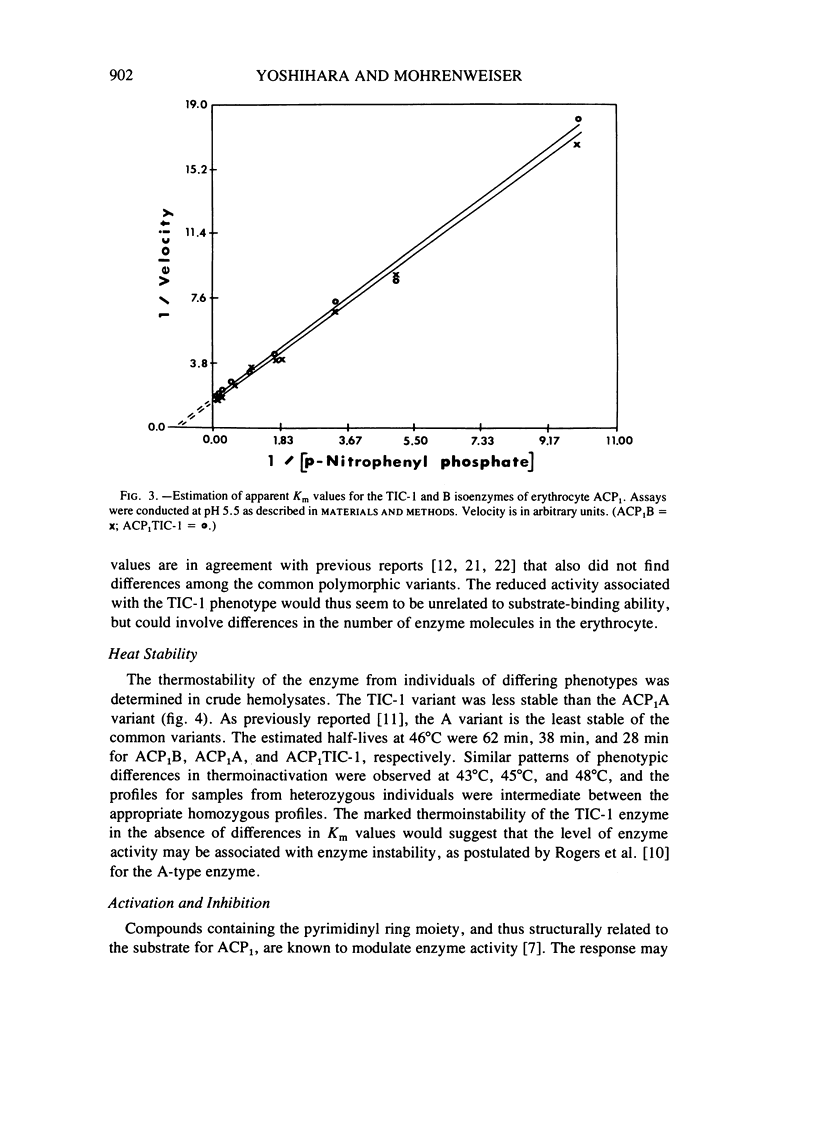
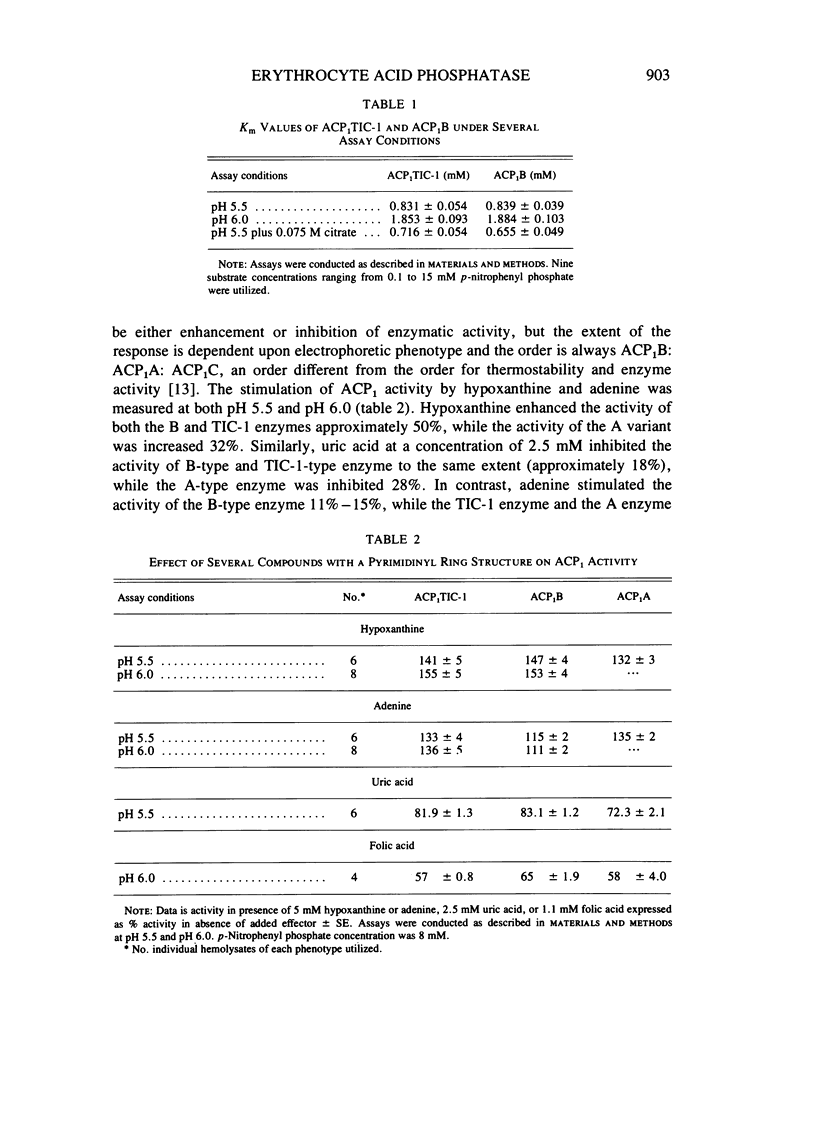
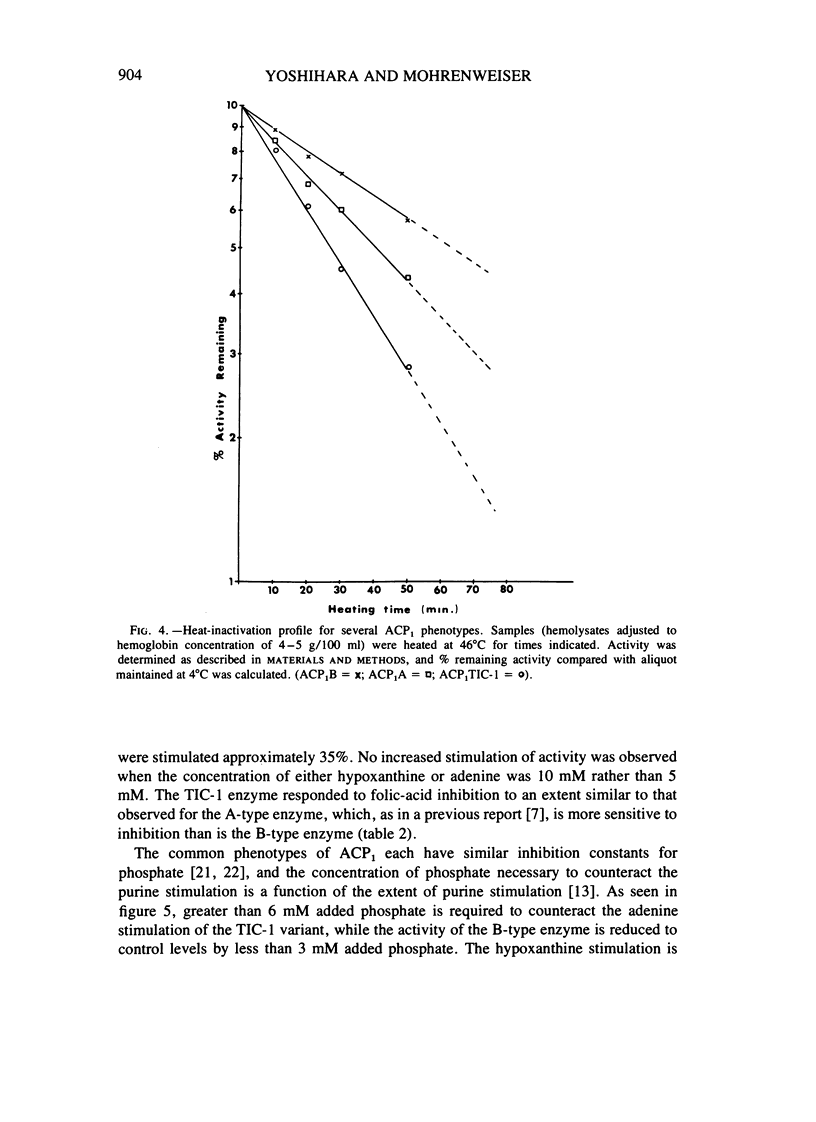
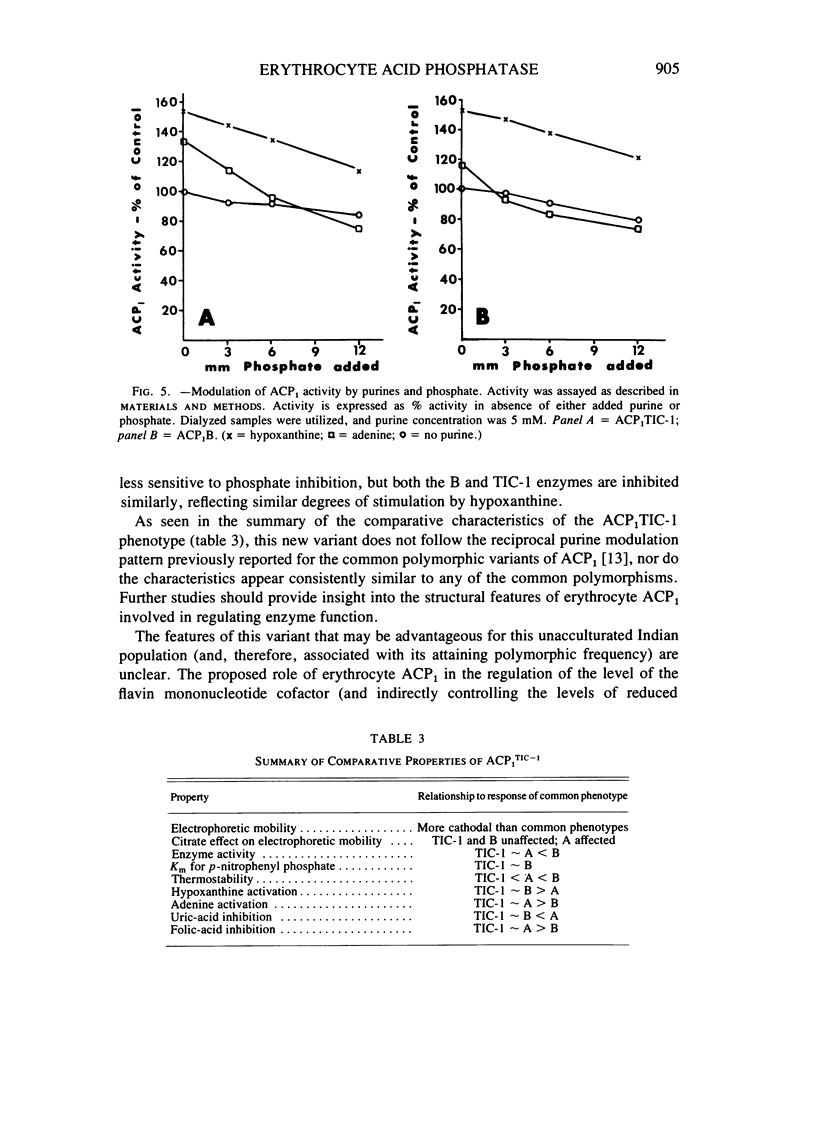

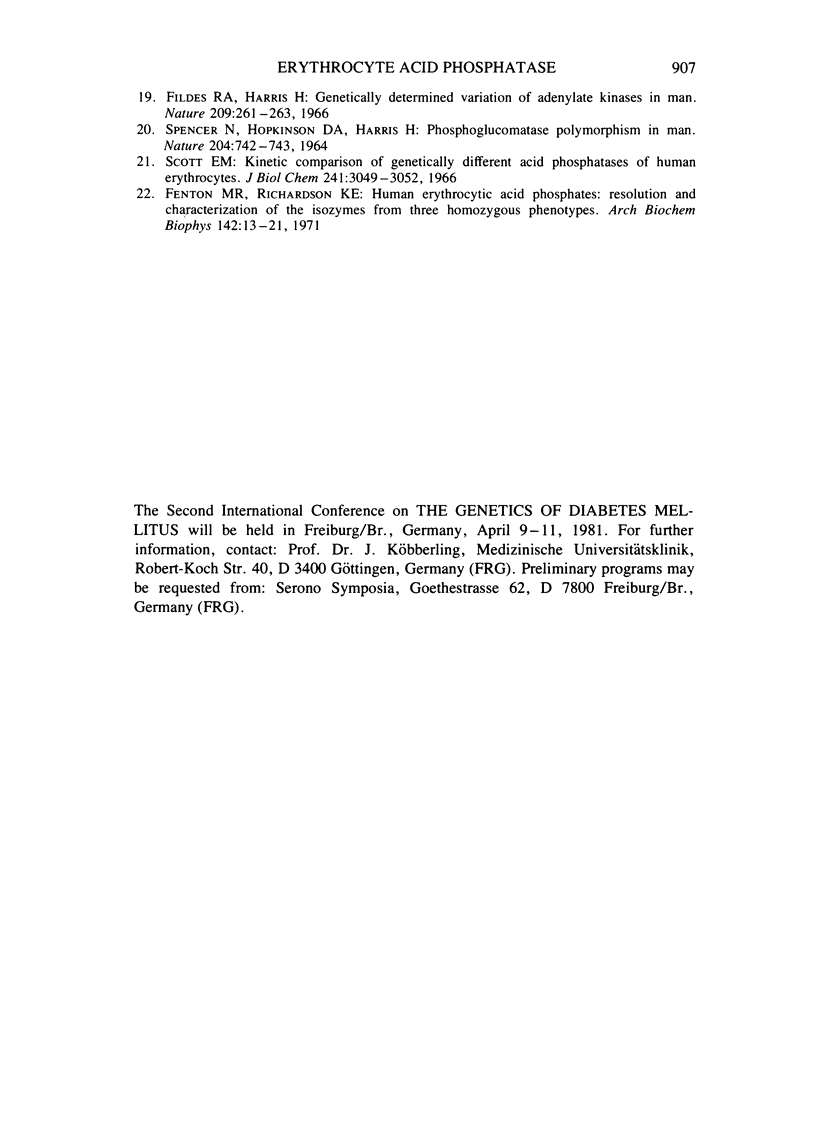
Images in this article
Selected References
These references are in PubMed. This may not be the complete list of references from this article.
- Bottini E., Lucarelli P., Agostino R., Palmarino R., Businco L., Antognoni G. Favism: association with erythrocyte acid phosphatase phenotype. Science. 1971 Jan 29;171(3969):409–411. doi: 10.1126/science.171.3969.409. [DOI] [PubMed] [Google Scholar]
- Bottini E., Scacchi R., Gloria-Bottini F., Mortera J., Palmarino R., Carapella-De-Luca E., Lapi A. S., Nodari C. Letter: Neonatal jaundice and erythrocyte-acid-phosphatase phenotype. Lancet. 1976 Apr 24;1(7965):918–918. doi: 10.1016/s0140-6736(76)92148-6. [DOI] [PubMed] [Google Scholar]
- Eze L. C., Tweedie M. C., Bullen M. F., Wren P. J., Evans D. A. Quantitative genetics of human red cell acid phosphatase. Ann Hum Genet. 1974 Jan;37(3):333–340. doi: 10.1111/j.1469-1809.1974.tb01840.x. [DOI] [PubMed] [Google Scholar]
- Fenton M. R., Richardson K. E. Human erythrocytic acid phosphatase: resolution and characterization of the isozymes from three homozygous phenotypes. Arch Biochem Biophys. 1971 Jan;142(1):13–21. doi: 10.1016/0003-9861(71)90254-2. [DOI] [PubMed] [Google Scholar]
- Fielek S., Mohrenweiser H. W. Erythrocyte enzyme deficiencies assessed with a miniature centrifugal analyzer. Clin Chem. 1979 Mar;25(3):384–388. [PubMed] [Google Scholar]
- Fildes R. A., Harris H. Genetically determined variation of adenylate kinase in man. Nature. 1966 Jan 15;209(5020):261–263. doi: 10.1038/209261a0. [DOI] [PubMed] [Google Scholar]
- Fisher R. A., Harris H. Studies on the separate isozymes of red cell acid phosphatase phenotypes A and B. II. Comparison of kinetics and stabilities of the isozymes. Ann Hum Genet. 1971 May;34(4):439–448. doi: 10.1111/j.1469-1809.1971.tb00257.x. [DOI] [PubMed] [Google Scholar]
- HOPKINSON D. A., SPENCER N., HARRIS H. GENETICAL STUDIES ON HUMAN RED CELL ACID PHOSPHATASE. Am J Hum Genet. 1964 Mar;16:141–154. [PMC free article] [PubMed] [Google Scholar]
- Luffman J. E., Harris H. A comparison of some properties of human red cell acid phosphatase in different phenotypes. Ann Hum Genet. 1967 May;30(4):387–401. doi: 10.1111/j.1469-1809.1967.tb00040.x. [DOI] [PubMed] [Google Scholar]
- Mansfield E., Sensabaugh G. F. Red cell acid phosphatase: modulation of activity by purines. Prog Clin Biol Res. 1978;21:233–249. [PubMed] [Google Scholar]
- Neel J. V. Rare variants, private polymorphisms, and locus heterozygosity in Amerindian populations. Am J Hum Genet. 1978 Sep;30(5):465–490. [PMC free article] [PubMed] [Google Scholar]
- Rogers P. A., Fisher R. A., Putt W. An examination of the age-related patterns of decay of acid phosphatase (ACP1) in human red cells from individuals of different phenotypes. Biochem Genet. 1978 Aug;16(7-8):727–738. doi: 10.1007/BF00484729. [DOI] [PubMed] [Google Scholar]
- SPENCER N., HOPKINSON D. A., HARRIS H. PHOSPHOGLUCOMUTASE POLYMORPHISM IN MAN. Nature. 1964 Nov 21;204:742–745. doi: 10.1038/204742a0. [DOI] [PubMed] [Google Scholar]
- SPENCER N., HOPKINSON D. A., HARRIS H. QUANTITATIVE DIFFERENCES AND GENE DOSAGE IN THE HUMAN RED CELL ACID PHOSPHATASE POLYMORPHISM. Nature. 1964 Jan 18;201:299–300. doi: 10.1038/201299a0. [DOI] [PubMed] [Google Scholar]
- Scott E. M. Kinetic comparison of genetically different acid phosphatases of human erythrocytes. J Biol Chem. 1966 Jul 10;241(13):3049–3052. [PubMed] [Google Scholar]
- Sensabaugh G. F., Golden V. L. Phenotype dependence in the inhibition of red cell acid phosphatase (ACP) by folates. Am J Hum Genet. 1978 Sep;30(5):553–560. [PMC free article] [PubMed] [Google Scholar]
- Swallow D. M., Povey S., Harris H. Activity of the "red cell" acid phosphatase locus in other tissues. Ann Hum Genet. 1973 Jul;37(1):31–38. doi: 10.1111/j.1469-1809.1973.tb01812.x. [DOI] [PubMed] [Google Scholar]
- Tiffany T. O., Chilcote D. D., Burtis C. A. Evaluation of kinetic enzyme parameters by use of a small computer interfaced "Fast Analyzer"--an addition to automated clinical enzymology. Clin Chem. 1973 Aug;19(8):908–918. [PubMed] [Google Scholar]
- VALENTINE W. N., TANAKA K. R., FREDRICKS R. E. Erythrocyte acid phosphatase in health and disease. Am J Clin Pathol. 1961 Oct;36:328–332. doi: 10.1093/ajcp/36.4.328. [DOI] [PubMed] [Google Scholar]
- WILKINSON G. N. Statistical estimations in enzyme kinetics. Biochem J. 1961 Aug;80:324–332. doi: 10.1042/bj0800324. [DOI] [PMC free article] [PubMed] [Google Scholar]



